ART IO
THE ART & CULTURE MAGAZINE





Bisa Bennett
An accomplished and experienced artist herself, Bisa Bennett understands the importance of creating meaningful opportunities for artists to exhibit their work. As a curator and multimedia designer, she is also well-versed in creating engaging opportunities for viewers to experience art. “At our gallery, our vision is to serve as a dynamic and inclusive platform that fosters connections between artists and art enthusiasts, nurturing a vibrant and diverse artistic community,” she explains.
Cover Photo Artist: Karaya
Instagram: artio.art.gallery
Email: exhibit@artiogallery.com
Copyright © Artio Gallery.Inc
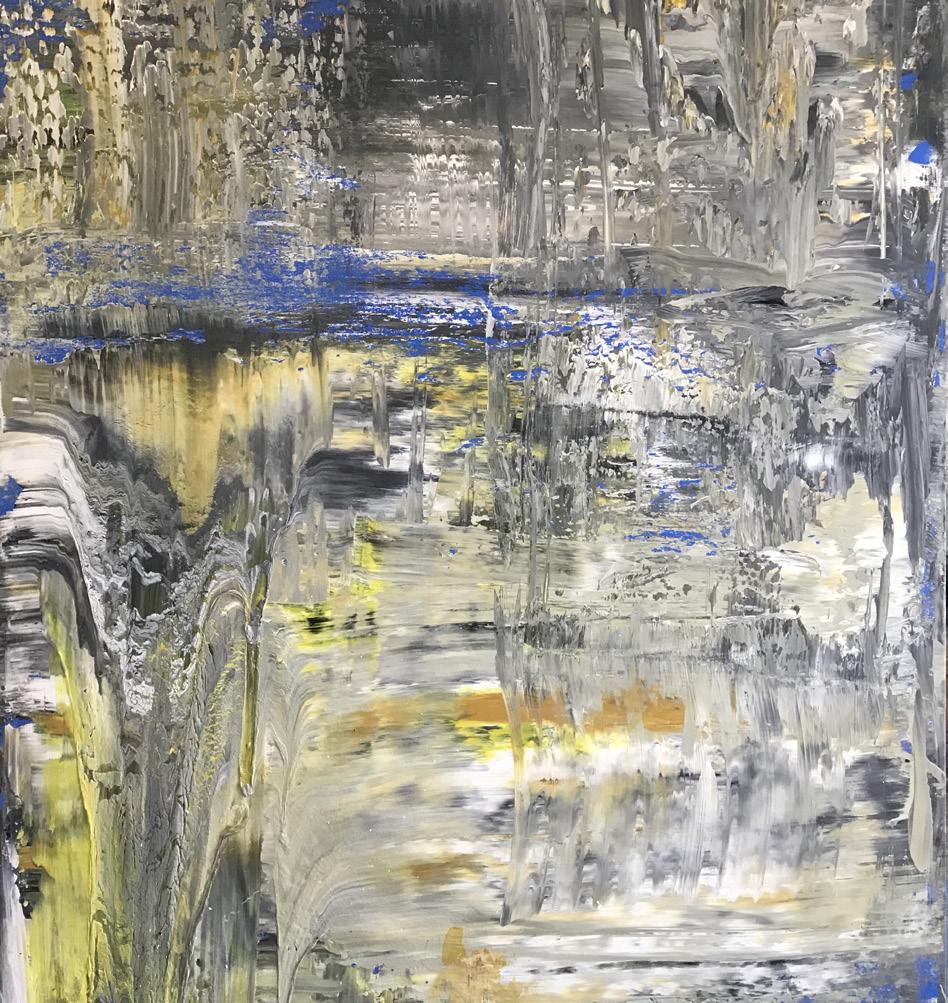


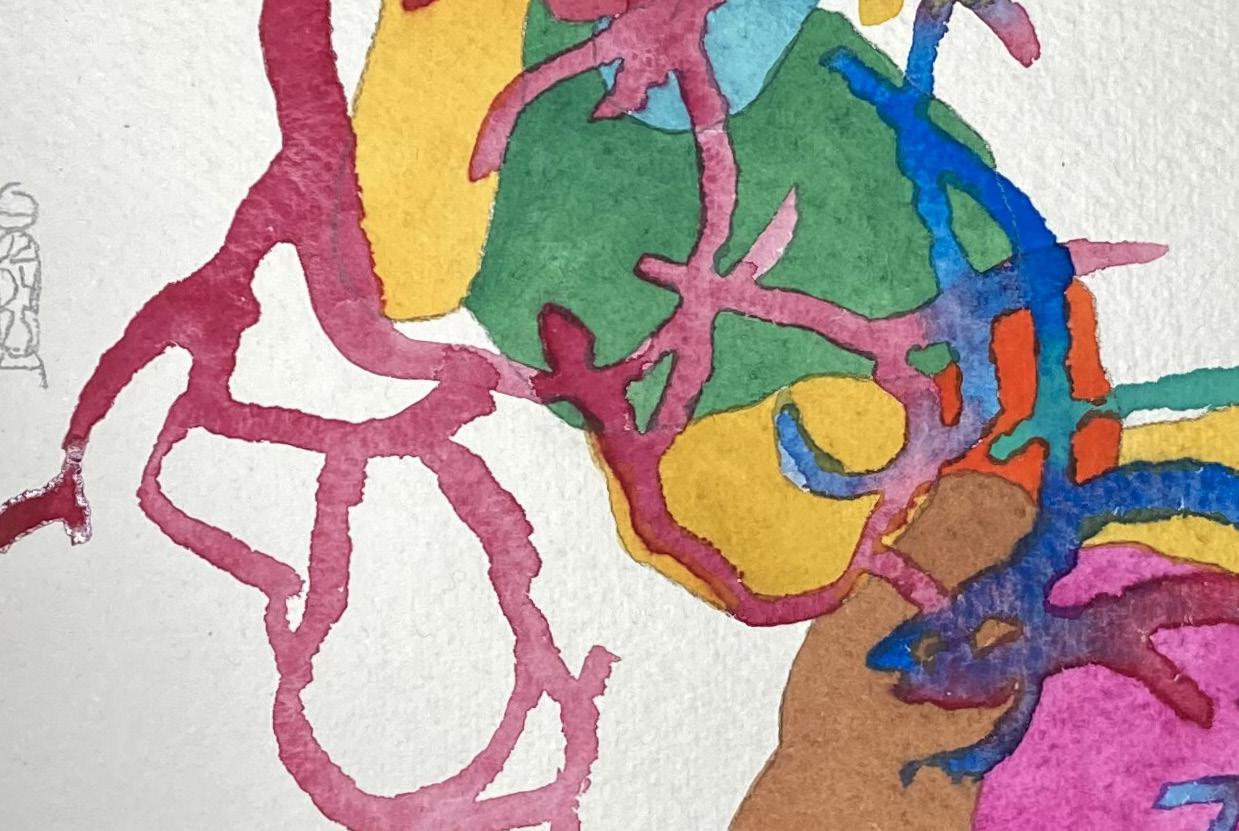
4 JASON FAIRCHILD INTERVIEW
12 GIORA CARMI INTERVIEW
27 THE QUIET POWER OF MINIMALISM IN CONTEMPORARY ART

I’vealways been captivated by the way colours interact and the incredible expressive potential of abstract forms. There’s something magical about translating my emotions and energy onto a canvas, using paint as my own unique voice.
- Jason Fairchild
Jason Fairchild’s artistic practice involves a kind of alchemy whereby paint becomes a medium for energy, intuition and emotion. Following in the footsteps of abstract masters such as Jackson Pollock, Willem de Kooning, Joan Mitchell, and more contemporaneously, Gerhard Richter, Fairchild’s paintings explore meaning beyond language and figurative representation. The painter crafts his own visual vocabulary within a tradition of expressive abstraction. He explains, “Through my art, I yearn to communicate a sense of raw energy, unfiltered emotion, and the captivating beauty I find in abstract forms. I’m deeply drawn to the interplay between chaos and order, and how those opposing forces can coexist and even complement each other within a single piece. It’s a reflection of the world around us and the complexities within ourselves.”
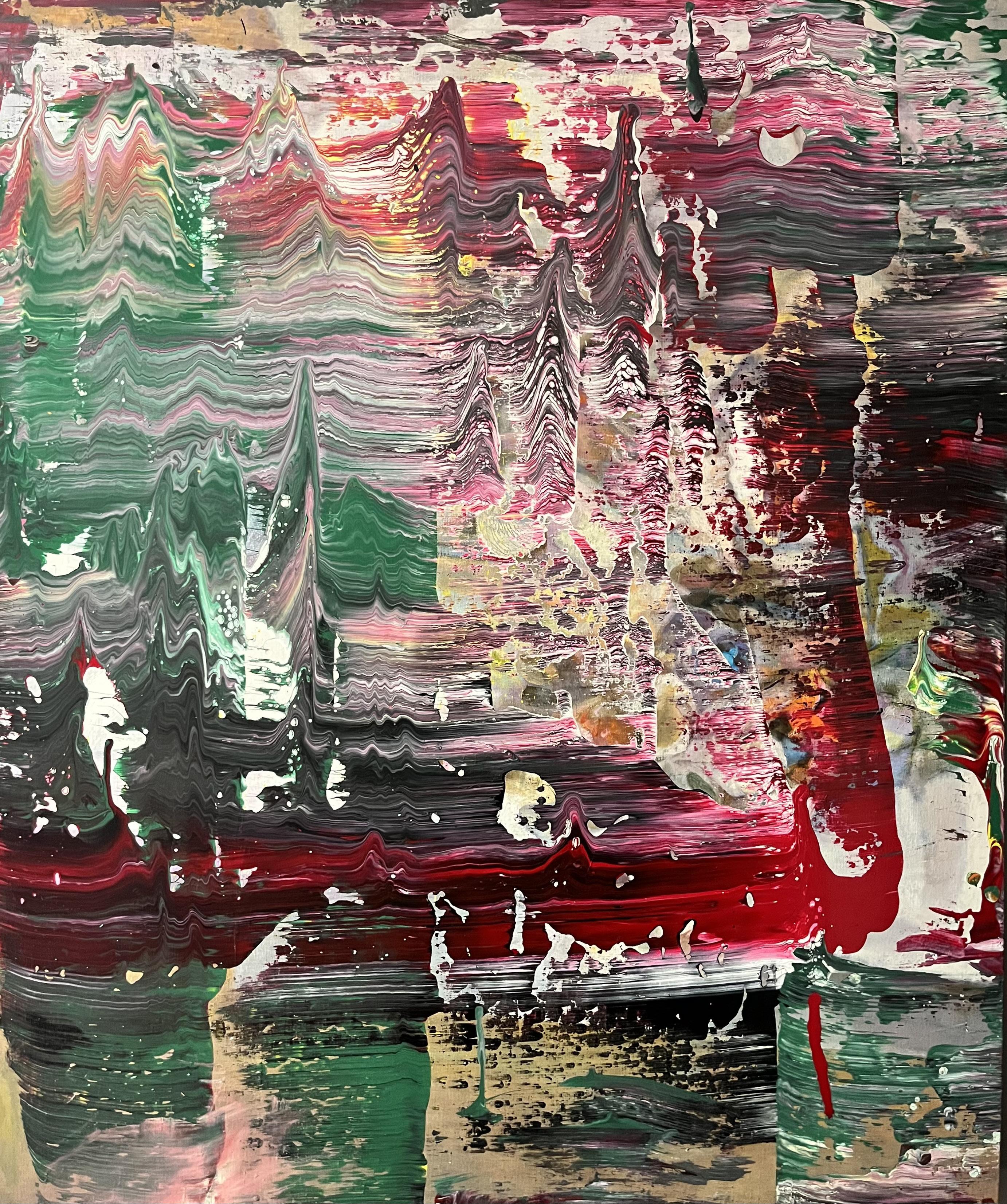
Works such as Crimson Faultlines and Turbulent Serenity contain a dynamic force within them. Energy is mapped across the surface of the canvas resulting in paintings recalling myriad forms, from waves and contours to landscapes and rock strata. These intensely gestural works capture something essential and elemental. For Fairchild, colour is an essential ingredient in his work. In pieces such as City Lights, Forgotten Nights and Whispers in Metal Sky, colour resonates with different emotions. “Colour is the lifeblood of my work! It’s the primary language I use to express emotions and create a powerful visual impact. My colour choices are influenced by everything around me – how I’m feeling, the incredible hues I find in nature, or even just the way colours dance and harmonize with each other. It’s an ongoing exploration,” enthuses the artist.
Fairchild’s practice is powerfully experimental and spontaneous, “My process is a journey of discovery! It usually starts with an intuitive pull towards certain colours that evoke a specific mood or feeling. From there, I let the paint guide me. Sometimes I use deliberate strokes, other times I embrace spontaneous movements and gestures. I absolutely love layering colours and textures, building depth and complexity as the piece evolves,” he explains, “It’s like uncovering a hidden world on the canvas.”

in Meat and Sky / Acrylic on Canvas / 120 x 150 cm
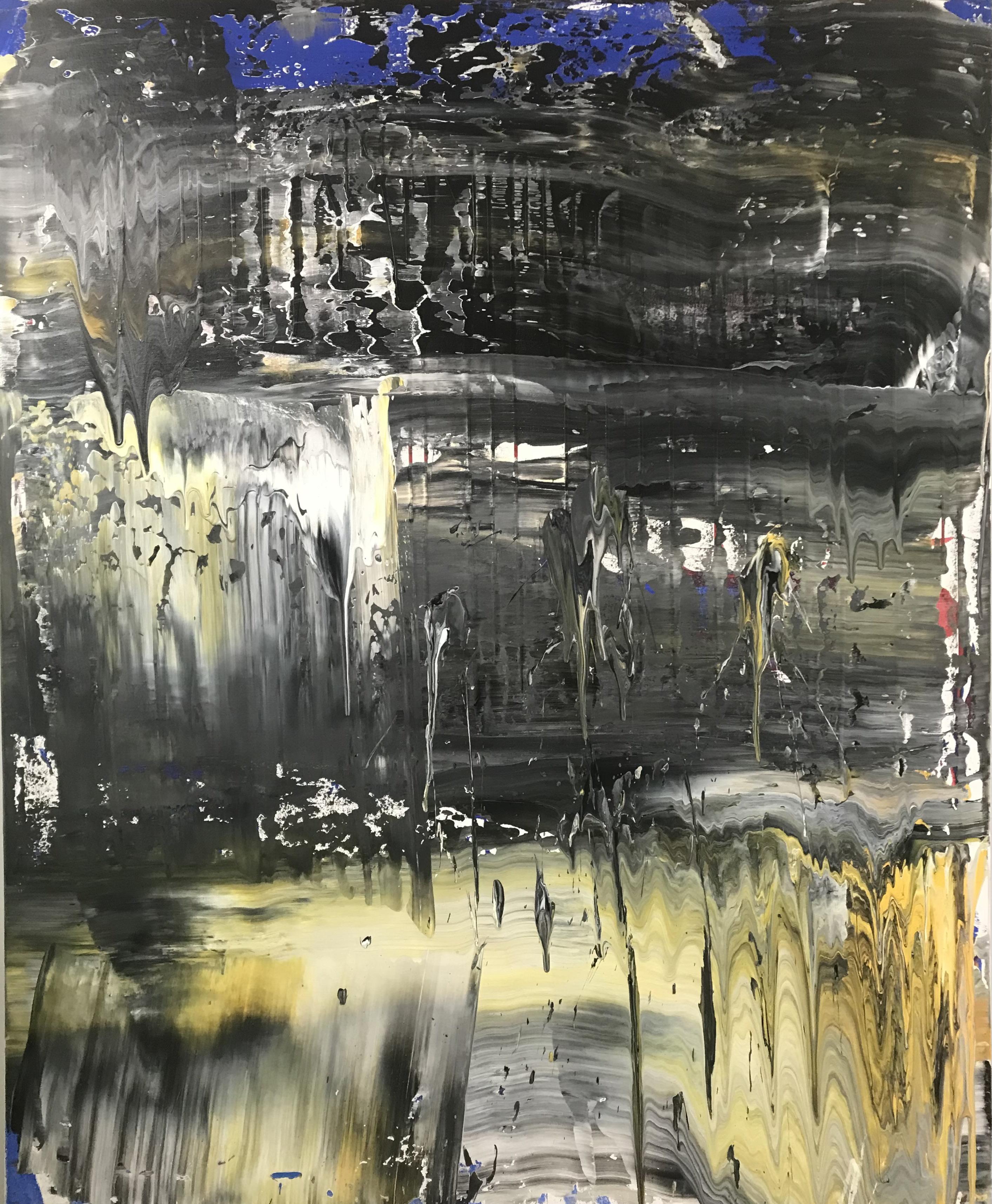
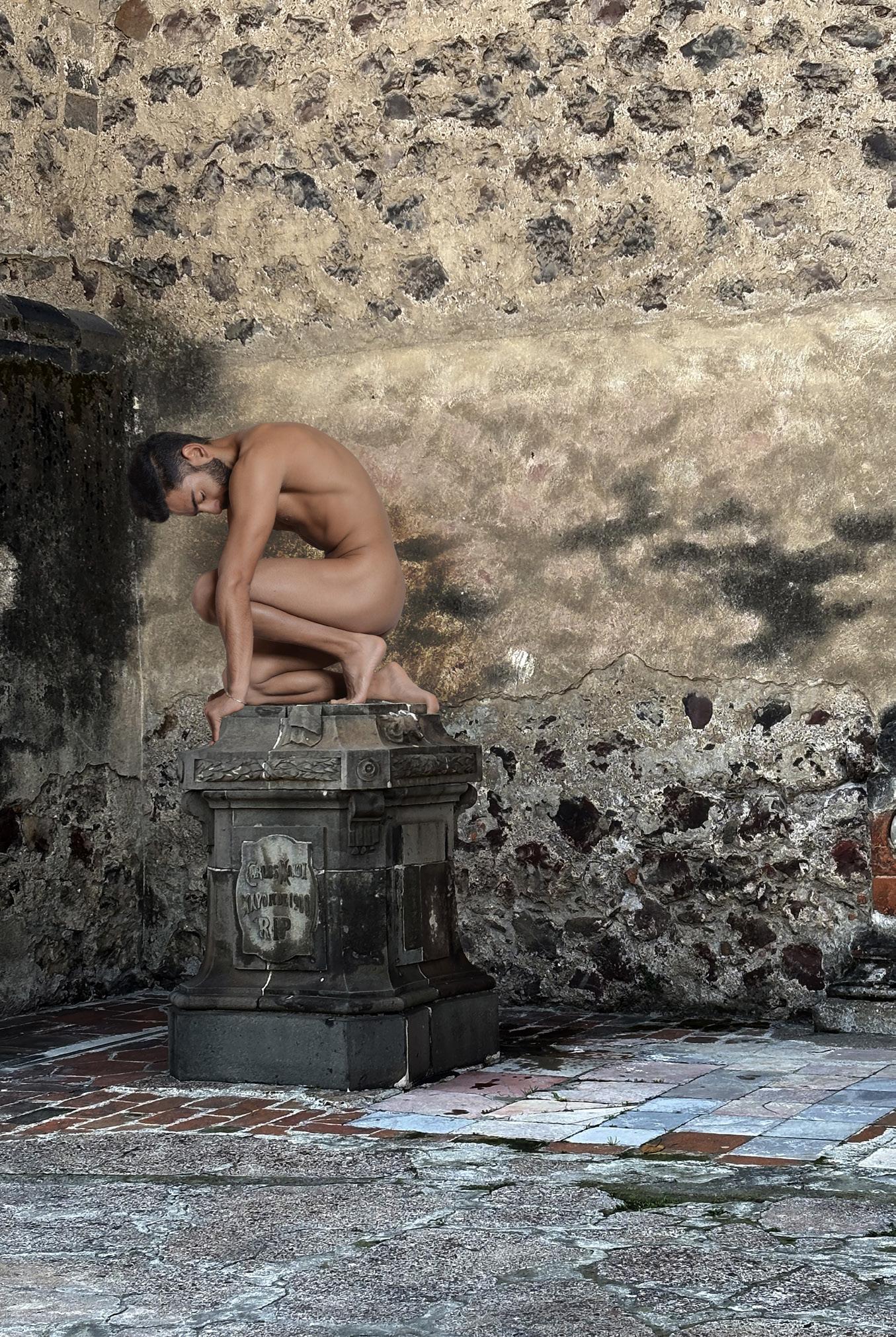
CarlosAbraham’s art celebrates the human form. With a background in photography and architecture, the Mexican artist creates images that examine and highlight the human body as a source of beauty. In works such as David, Base - Columna and C3, the male nude is situated within unexpected contexts. The body’s natural form is juxtaposed with detailed architectural and industrial surroundings.
Recalling Greco-Roman sculpture, the human form is given a timeless classical representation. These are images of contrast imbued with corporeality and sensuality. Abraham has exhibited throughout Mexico and Buenos Aires. His work is held in the permanent collection of the National Institute of Anthropology and History of Mexico.
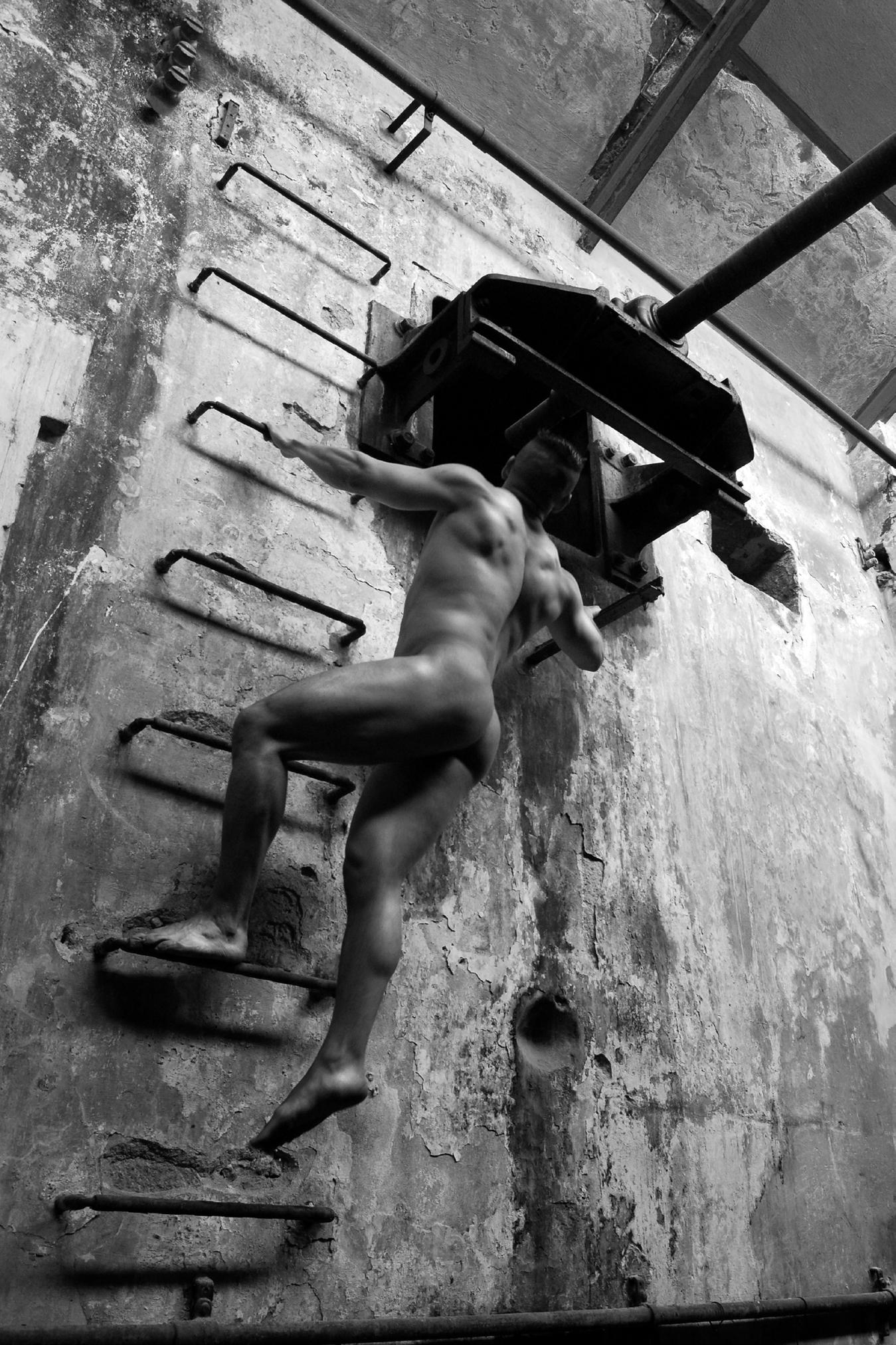
From childhood I was fascinated with lines, lines that I made with pencil on paper, or lines made with a brush loaded with paint. Then I discovered colours. My elder brother got a new set of coloured pencils, and he let me try them out. There were specific combinations that made me feel awe. I painted areas of them again and again to feel that awe. Giora Carmi
Giora Carmi is a board-certified art therapist, illustrator of over forty children’s books and author of two, and a Zen meditation practitioner. Uniting his practice is a lifelong exploration of beauty, creativity and the subconscious. Carmi’s paintings in watercolour and gouache on handmade paper are replete with colour, movement and energy. The artist’s idiosyncratic visual language is characterised by a lightness of touch. In works such as Before the Evening Comes and Be, clouds of colour appear to jostle with dancing lines and intuitive mark-making. In some works, there are shapes reminiscent of microscopic cells and delicate grids, however, Carmi’s paintings move beyond the figurative or representational, towards more emotional and intuitive meanings.
For Carmi, the process of making art is a process of exploration, that involves channelling his intuition and delving into his subconscious mind. He explains, “Throughout all this process there is very little thinking. I do not know what I painted. Many times, I am at this same [in] awe, as I was as a kid, many years ago. I wonder at the beauty.” In many ways, the creative act is a way for Carmi to process and ‘read’ inner meaning. “This reading of the painting makes me aware consciously of what is going on in my deep mind. And I feel relief. Because when you are consciously aware of your inner energies, everything that is not real dissolves, and what is real remains. The real is what is always there, the infinite mind of everything,” explains the artist.
Yes appears
Yes to earth and green
Yes to sky and sun
Yes to body full of strength
Same yes appears In the mesh of life And me.
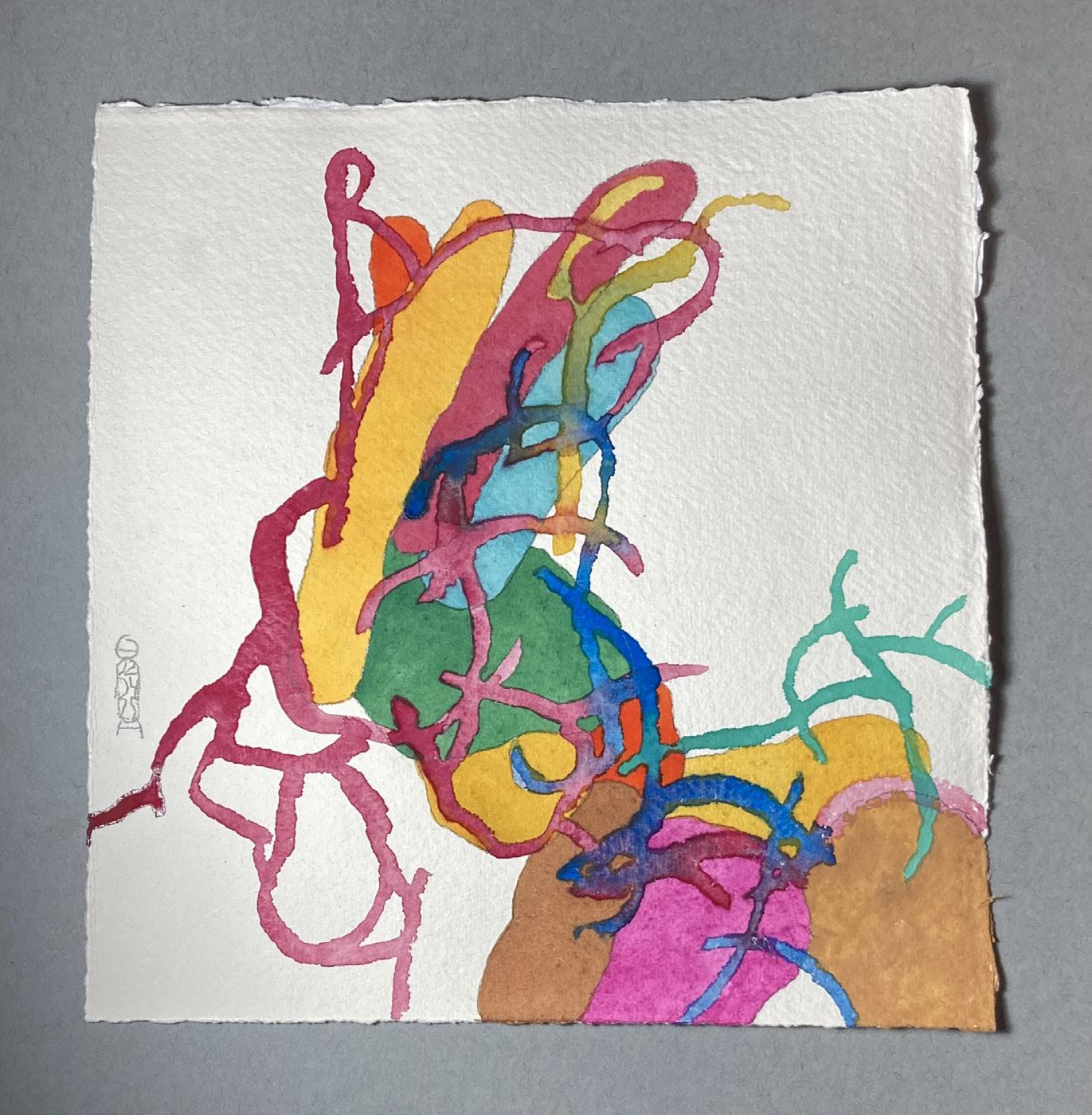
I am trying to make trees
But they are falling
They come together for a grove And find that they are crying. The sun comes down to help them out But cannot cheer
The heavy boughs and leaves, For they are made of lead. The birds that were supposed To live among them
Freeze and tremble Silently.
I do not understand: Has the spring come at last Or is it fall Again?
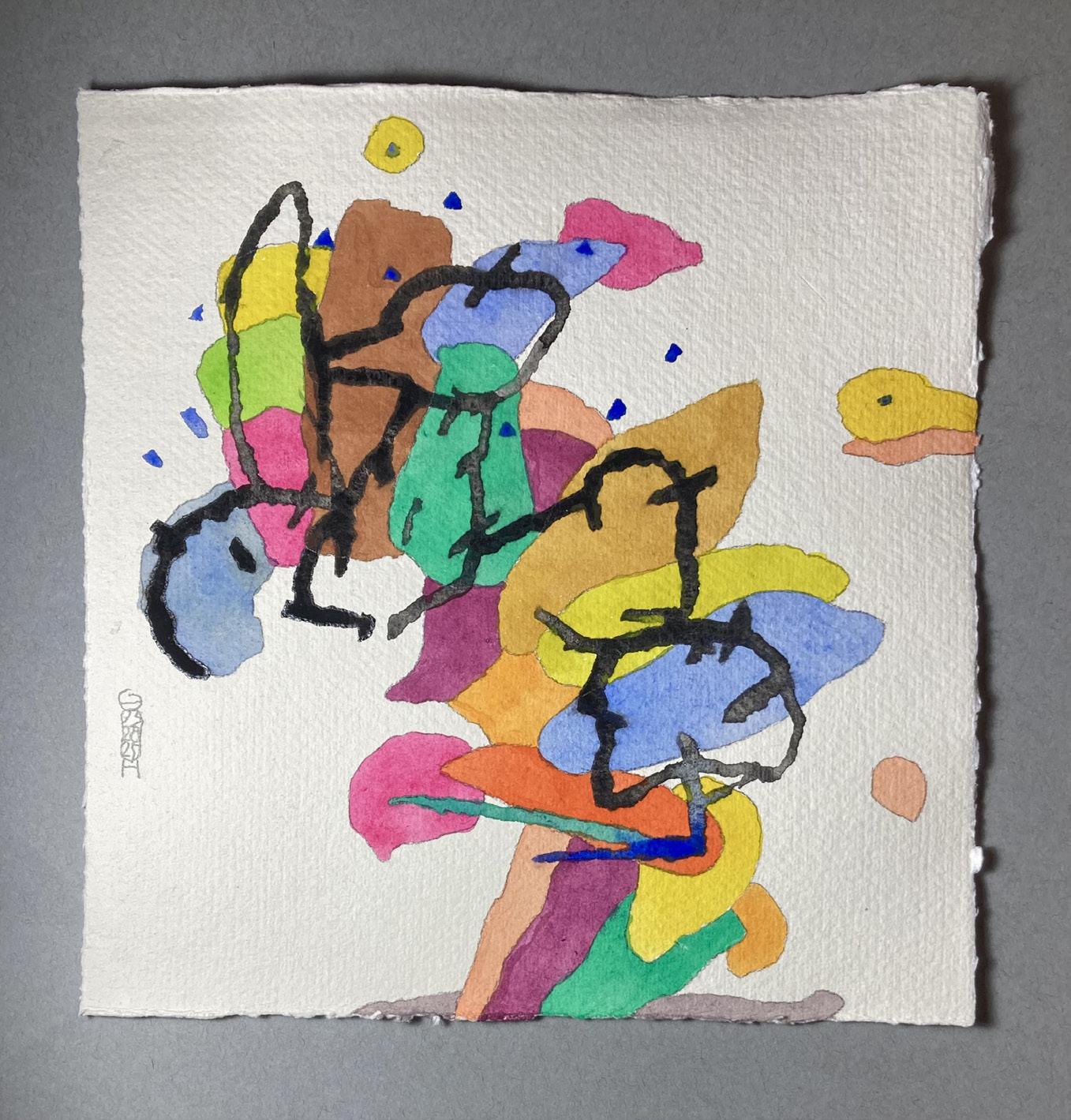
Carmi’s paintings express a certain purity, where action is distilled into vibrant hues and abstract forms. He likens his compositions to self-contained worlds animated by a dynamic interplay of shapes and colours. The artist enthuses, “It is funny to think so, maybe, but for me, every shape with its colour is a complete being. And it always gets to do on the paper exactly what it wants to do, like in a real democracy. And somehow, magically, what this little being wants to do and does fits perfectly with what its environment needs. This is the way I feel about it.”
Viewing a painting by Carmi involves taking a glimpse into a world that reminds us to look for our own source of colour and joy. As the artist himself summarises, “I want people to feel the friendliness that is hiding in everything, even in the “dark parts”. I want people to feel good about themselves. I want them to make a pilgrimage into their minds, if they are interested.”

Be
Your nervous strength Stands on thin legs When the lights on stage And sounds of bands Are calling Listen to your heart Collect yourself And be.
Before the evening comes
What is white Will darken.
Vibrant colors will be black. Earth will tell her stories Till it’s late Then deeply sleep. This is what The dwellers of the jungle Think About the coming evening Before the evening comes.

Focus
You are full of colors Mostly warm But some are cold Or airy And you are falling On the earth
That is only a line. The animals are coming To play with you In their ways. The pavement is hard And the animals’ love Is uncomfortable Sometimes But looking at it From the soft inner side
Where your energies Make your world
Where do you prefer To put Your focus on?
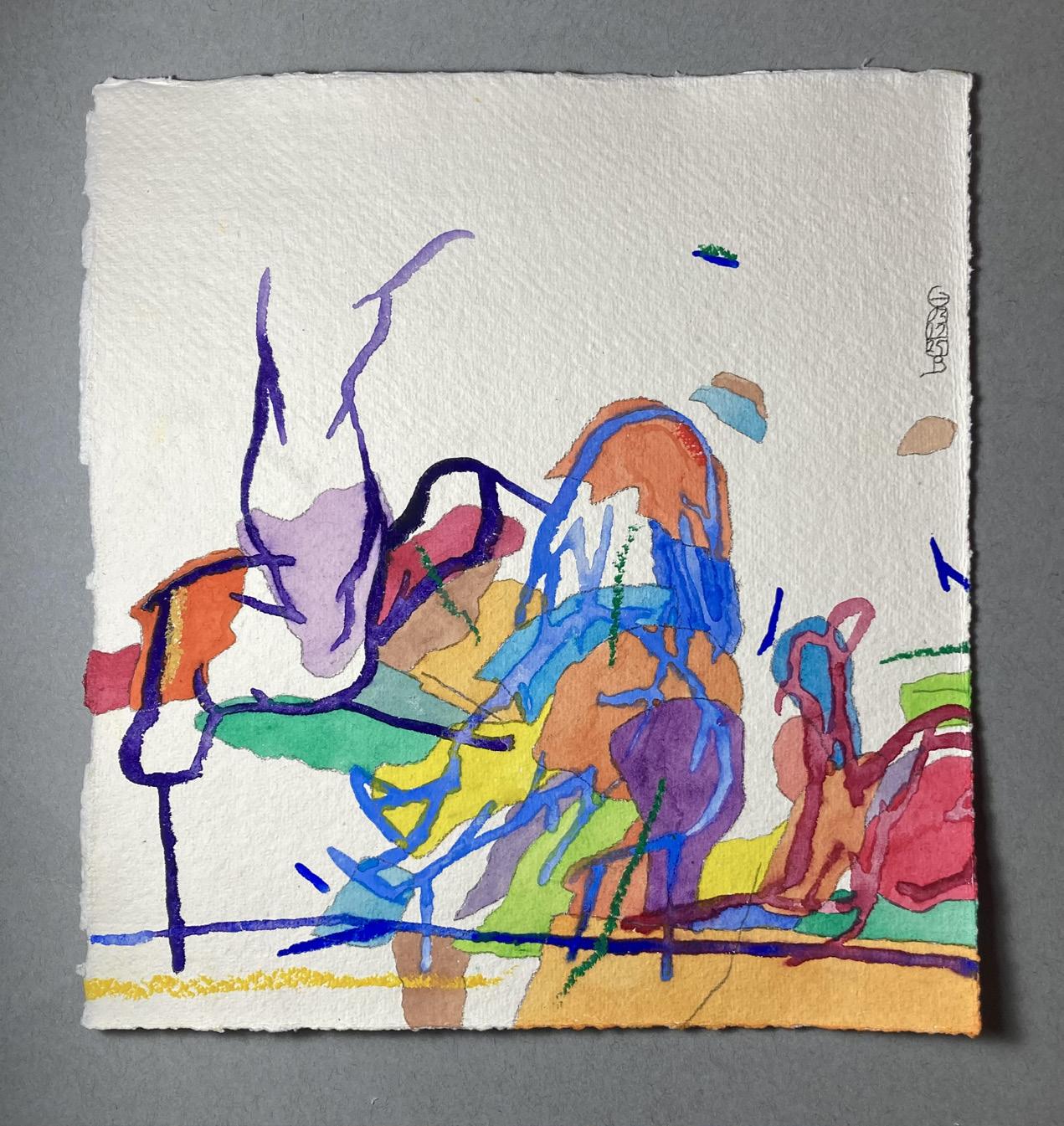


“Beyond
at the European Museum of Modern Art in Barcelona, Spain.
June 13-15, 2025
Opening reception: June 13th, at 6pm.

In highly technical large-scale oil paintings, Iryna Götz images are layered with symbolism and meaning. In the style of Renaissance masters, her portraits are imbued with realism and narrative. In The Butterfly Catcher, a veiled woman appears to be attempting to catch butterflies, referencing a desire to capture and hold onto something fleeting. Her elaborate dress and gold crown contrast beautifully with the iron in her hand, a symbol of banal domesticity. The figure stares steadfastly at the viewer. In Marie, the figure also looks back at the viewer resolutely. These are paintings infused with power and intrigue. Employing a rich warm colour palette and a highly detailed painterly technique, the artist’s visual vocabulary is unmistakable. Iryna Götz was born in Ukraine. She now lives and works in Germany.

Mara Montagna’s artworks are instantly recognisable for their rich embellished surfaces and vibrant colour palette. Combining various media, including fabric, rhinestones, beads and bright acrylic paint, the artist creates images with a visual intensity and an unmistakable ornate decorative quality. In works such as Nel Canyon di Hockney, Fiori, Il Leopardo, and Nel Tuo Respiro, Montagna explores myriad subjects, from landscape and animals to abstraction and figuration. What unites her exploratory practice is a visual language characterised by vivid high-contrast colours and tactile textured elements. Her artworks are celebratory and joyous. Montagna has participated in the Luxembourg Art Prize, MEAM in Barcelona and Effetto Arte in New York, Los Angeles, Miami and Washington.

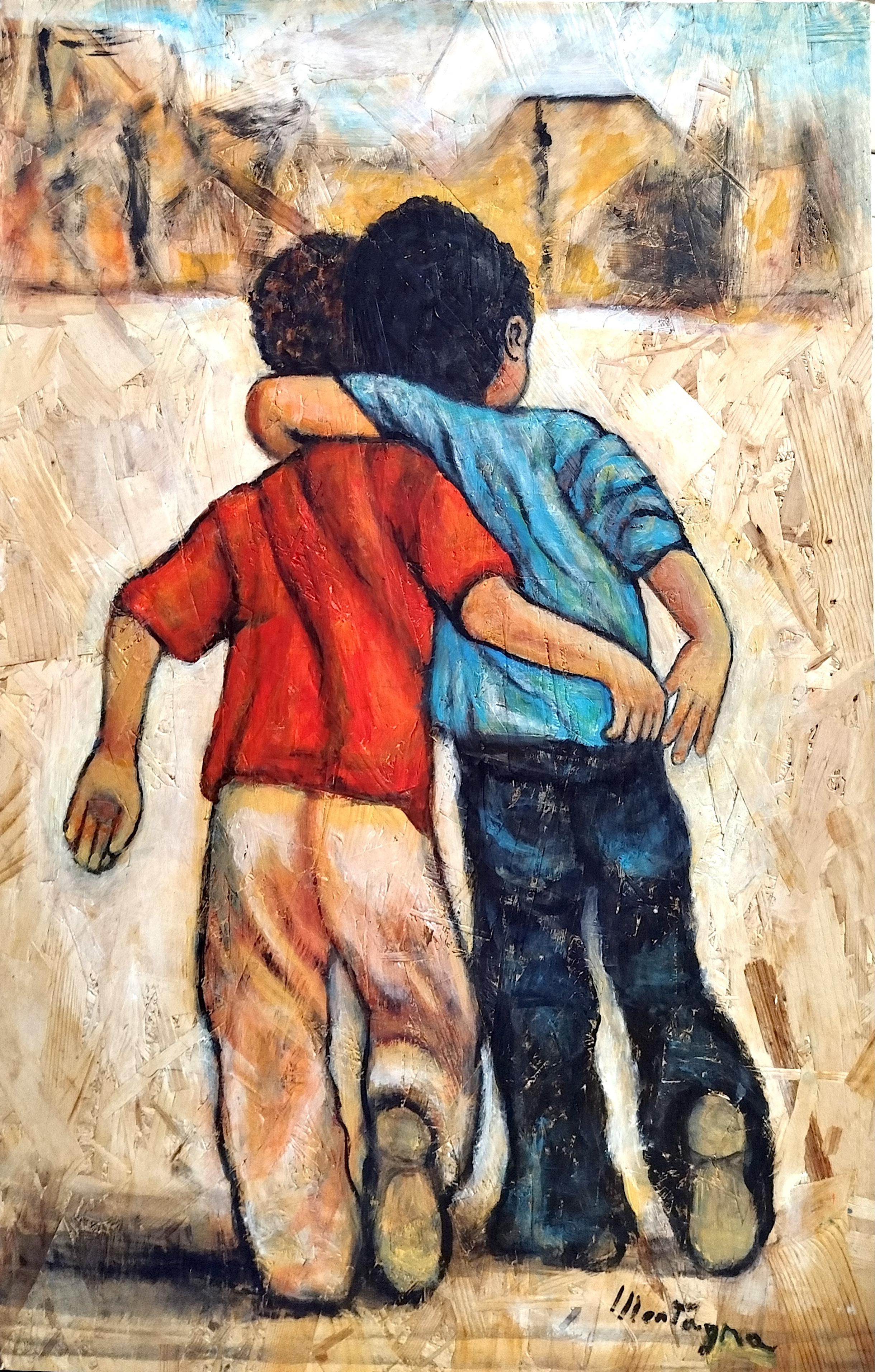
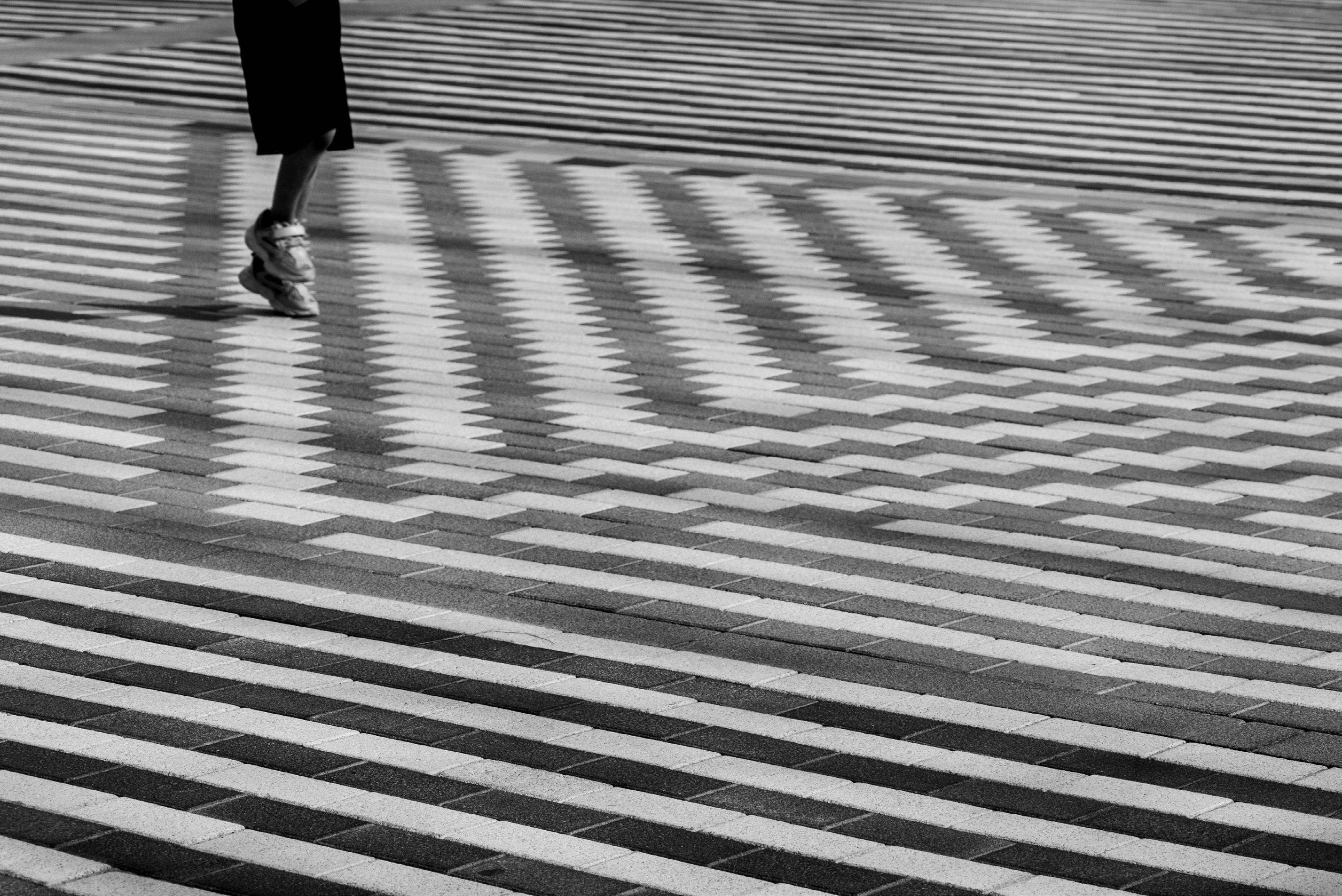
“Photography is my passion. My main inspiration is to find beauty and harmony in abstract images, images of landscapes or diverse scenes. I like to transmit these characteristics in my photos and thus, make those who see my work, feel the harmony and beauty in objects from the most mundane to the most transcendent to inspire them [to] make this world a better place,” explains the photographer Rocío Valdés de Becerra. The artist masterfully captures exquisite details and fleeting moments. Her ethereal images often have an impressionistic quality that represents the beauty and power of light. In works such as Light Geometries, Innocence and The Warmth of Home Valdés de Becerra captures light, patterns and architectural forms. These delicate yet powerful images abstract the everyday to bring us into a new relationship with the world around us.

ContemporarySouth African artist Sharon Sampson specialises in oil painting and printmaking. Notably, in 2015, she created the first South African Fine Art Print Fair (FAP). In her series Rewilding the Feminine, the artist explores the importance of restoring our innate connection to nature and the natural world. In restive meditative works such as Intimate Conversation l (baby bird) and Intimate Conversation ll (Long-tailed bird), Sampson delicately builds an image using soft ground and dry point etching. In these works, our attention is drawn to the intricate patterns found in nature. Human figures are comprised of leaves, petals and flowers. The artist explains, “I pay tribute and homage to nature in my conceptual work and our multifaceted relationship with nature and self and the intermingling of the two.”
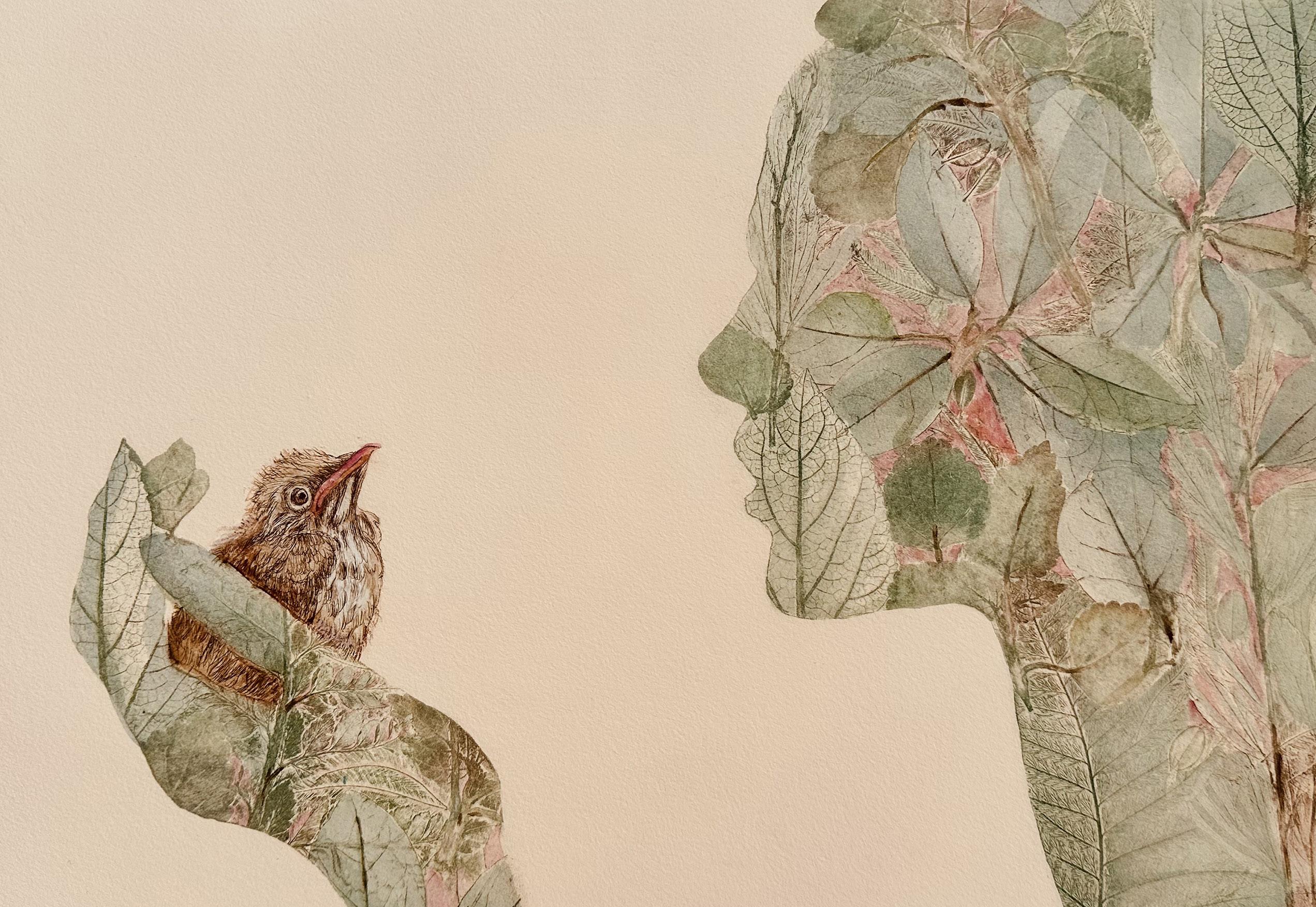
“Intimate Conversation l” (baby bird) / Soft ground and Drypoint etching / 55 x 65 cm
“Intimate Conversation ll” (Long-tailed bird) / Soft ground and Drypoint etching / 55 x 65 cm
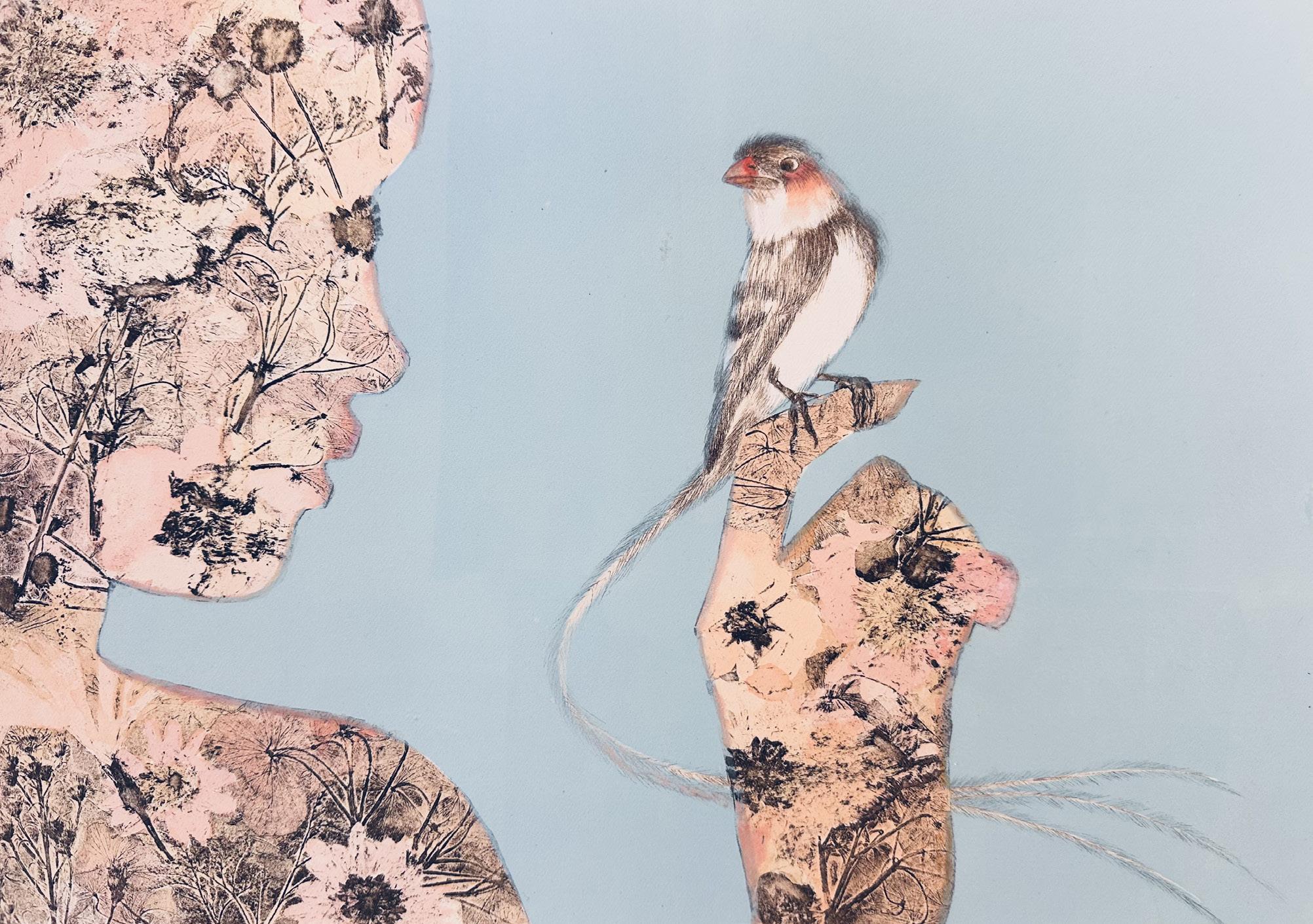
In an era of climate crisis and environmental awakening, the art world is increasingly aligning itself with ecological consciousness. Eco-art, or ecological art, has emerged as both a movement and a practice, addressing humanity’s relationship with the environment through creative expression. Far from being confined to gallery walls, eco-art manifests across landscapes, public spaces, and even in scientific research.
Eco-artists often focus on collaboration and activism. Figures such as Agnes Denes, with her Wheatfield – A Confrontation (1982), transformed two acres of Manhattan landfill into a golden wheatfield. Denes’ work highlighted issues of food production, urban development, and land use in a strikingly poetic yet critical gesture. More recently, artists like Olafur Eliasson have used installation and performance to address the fragility of our ecosystems, melting icebergs and presenting them to urban audiences as stark, tactile reminders of the polar crisis.
Materials are another crucial aspect of eco-art. Many practitioners favor sustainable or reclaimed mediums, or even living systems, like plants, soil, or water. The use of biodegradable, non-toxic substances reinforces the work’s message: art should not harm the planet it seeks to protect.
Importantly, eco-art invites participation rather than passive viewing. Viewers are often asked to reflect, intervene, or become stewards of the environment. This shift from aesthetic appreciation to active engagement is central to the practice. In a world reckoning with environmental degradation, eco-art is more than commentary; it is a call to action.
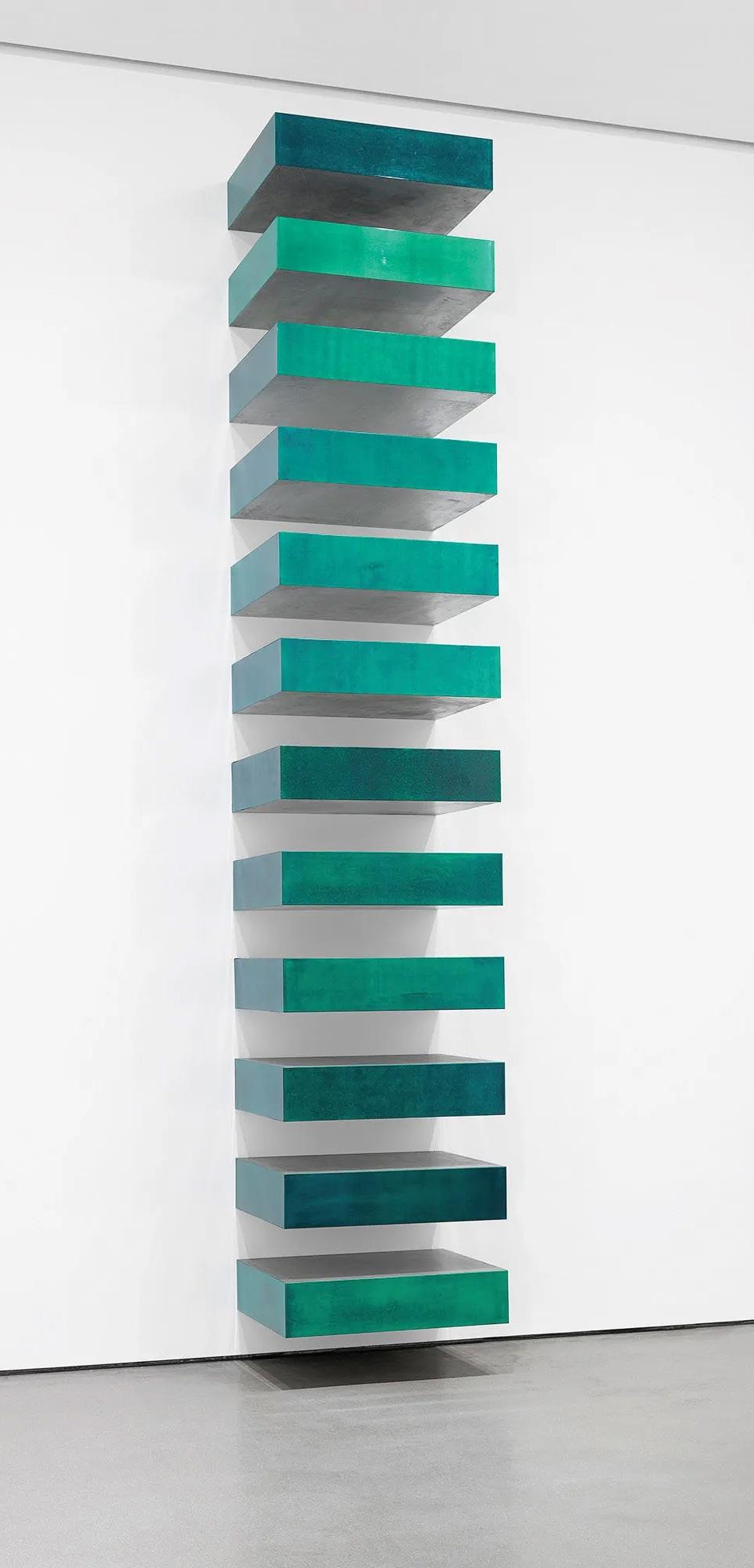
with its stripped-down aesthetics and emphasis on form, might seem like an art of restraint. Yet its influence on contemporary art remains profound. Emerging in the 1960s as a reaction to the expressive excesses of Abstract Expressionism, minimalism sought clarity, purity, and directness.
Artists like Donald Judd and Dan Flavin pioneered the movement, focusing on industrial materials—steel, Plexiglas, fluorescent light—crafted into simple, geometric forms. Their work rejected symbolism and emotional expression, encouraging viewers to engage directly with the object and its physical space.
Today, minimalist aesthetics permeate not only galleries but also design, architecture, and popular culture. Contemporary artists are reinterpreting minimalism’s principles, infusing them with new meaning. For instance, Korean artist Lee Ufan’s sparse sculptures and paintings merge minimalist precision with philosophical reflections on perception and existence. His work explores the tension between emptiness and presence, a hallmark of East Asian thought intersecting with minimalist rigor.
Minimalism challenges viewers to slow down, look closely, and reconsider the fundamentals of form, light, and space. In a world cluttered with imagery and information, its quiet power feels more relevant than ever.
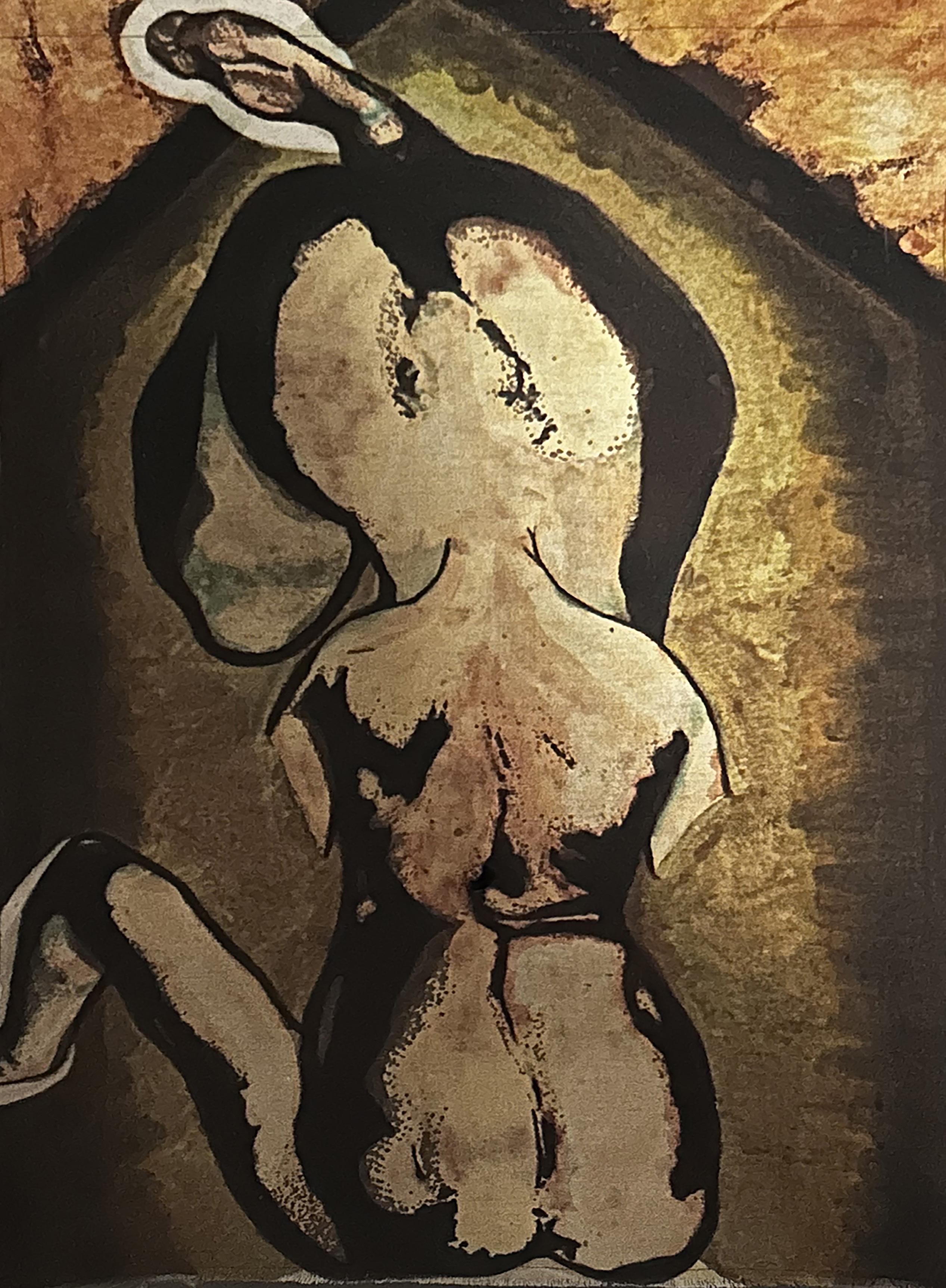
VThrough her artistic practice, Vanessa Vanek explores intensely personal narratives that have universal resonance. Drawing from her experience of disability and trauma, the artist creates mixed media works that confront themes of beauty, identity and resilience. In hand-painted and screen-printed works such as Spina Complexity of My Mind, Milagros for Lulu, and It Is Good, the body is abstracted and reimagined. In TTB and A Bruised Reed, Vanek layers original photography, digital and medical imagery. The artist explains, “In a world obsessed with perfection, I use my life experiences to challenge traditional ideas about beauty and identity through my work in digital media and fiber art […] Through my artwork, I aim to prompt viewers to reconsider their ideas of beauty and normalcy while encouraging them to find beauty in imperfections.”
/ digital layering with photography and my CT scans along with open source spine images / 80 x 100 cm

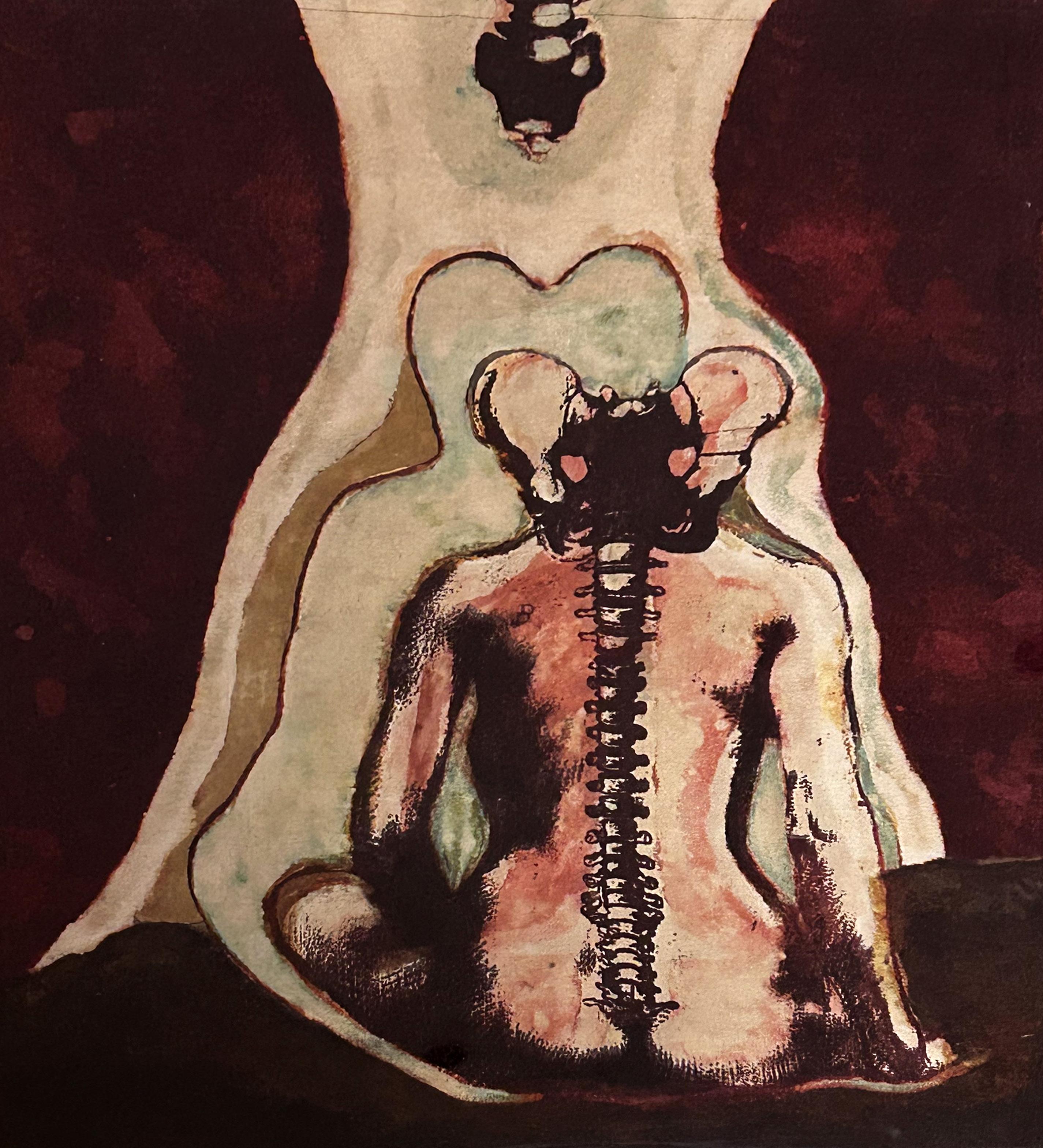

Born in Vittorio Veneto, Michela Pizzinat studied at the Liceo Artistico Statale in Treviso before continuing at the Accademia di Belle Arti in Rome, where she specialized in sculpture. She completed her studies at the International School of Graphics in Venice. Her practice moves between graphic design and personal artistic research, leading her to develop a unique visual language across painting and sculpture.
Working primarily with acrylic on canvas, Pizzinat creates dreamlike portraits that blend emotional symbolism with striking, stylized forms. In Dama del Pianto and Dama delle Rose Rotte, the figures are adorned with floating eyes, petals, and tears—symbols of inner experience rendered with clarity and calm. Both works evoke a sense of ritual and introspection, inviting the viewer into a quiet, surreal world.
Pizzinat has exhibited in Venice, Paris, and London, showcasing both her paintings and terracotta sculptures.

www.artiogallery.com
exhibit@artiogallery.com